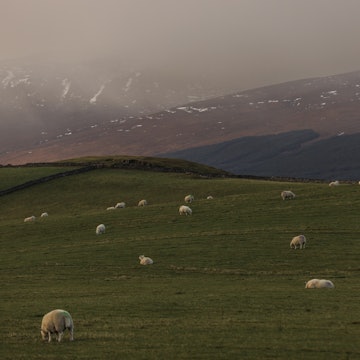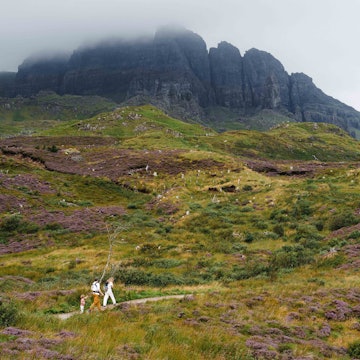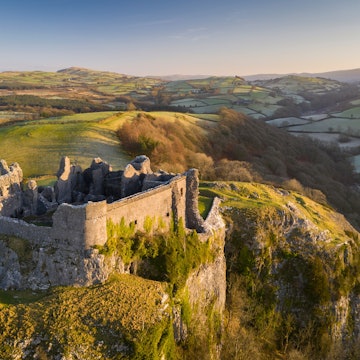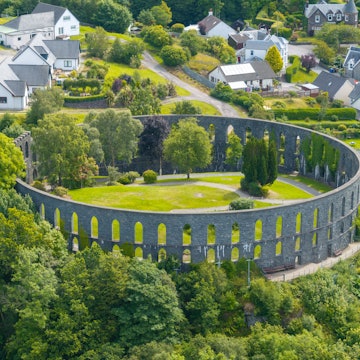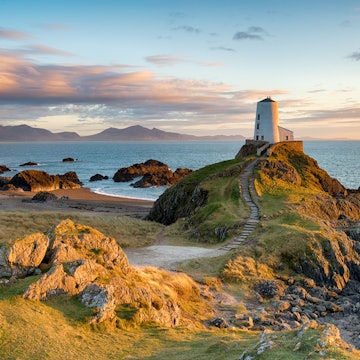
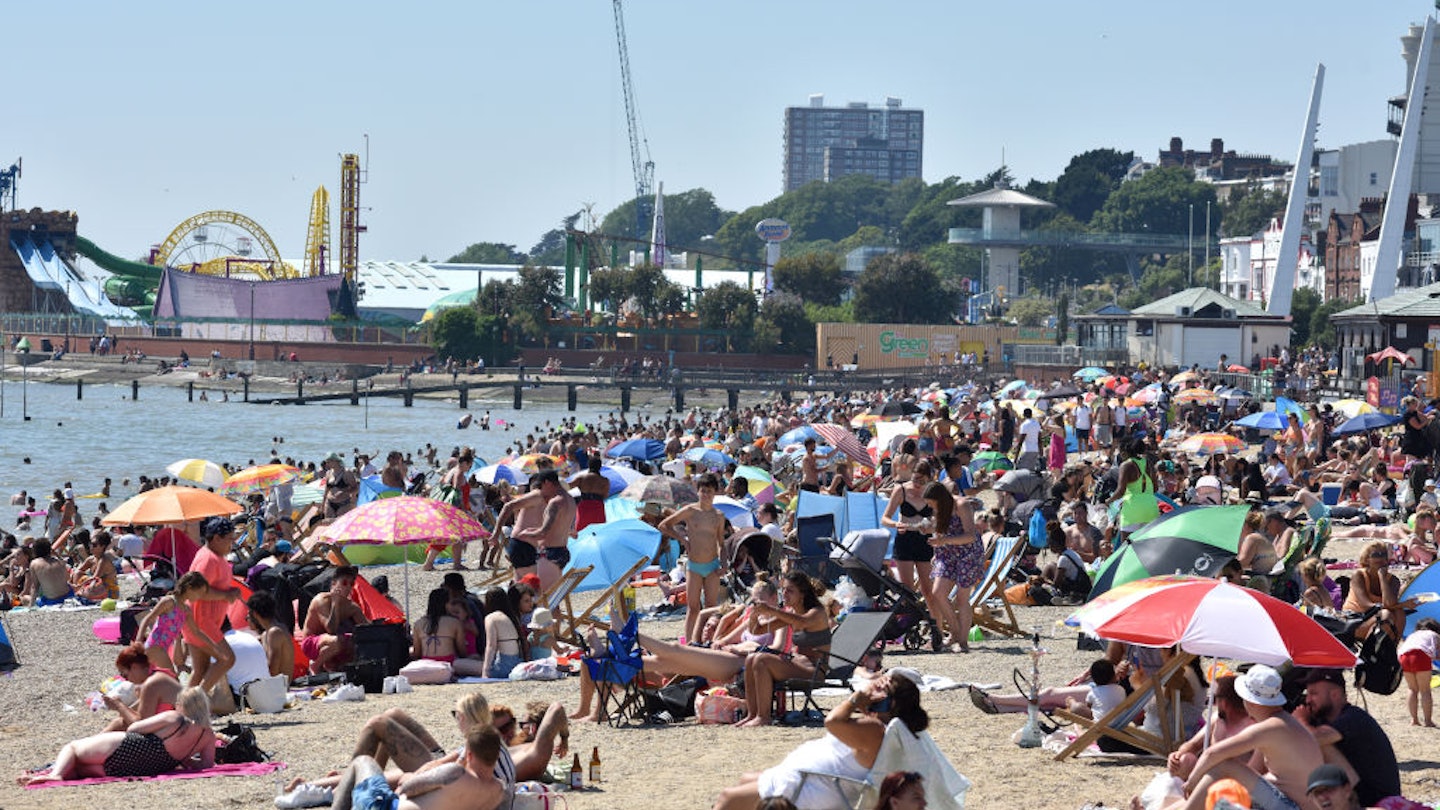
A crowded beach at Southend-on-Sea, England on 25 June. © John Keeble/Getty Images
With staycations increasing in popularity in the UK this year and temperatures there soaring to heatwave levels, beaches and coastlines are becoming very packed. Post-lockdown, rather than making a beeline for Cornwall, Devon, the Lake District or the Highlands, why not try out some of the UK’s lesser trod beauties? You’ll not only be rewarded by sparser crowds, but you’re less likely to stress out the locals. For up-to-date opening information check individual websites.
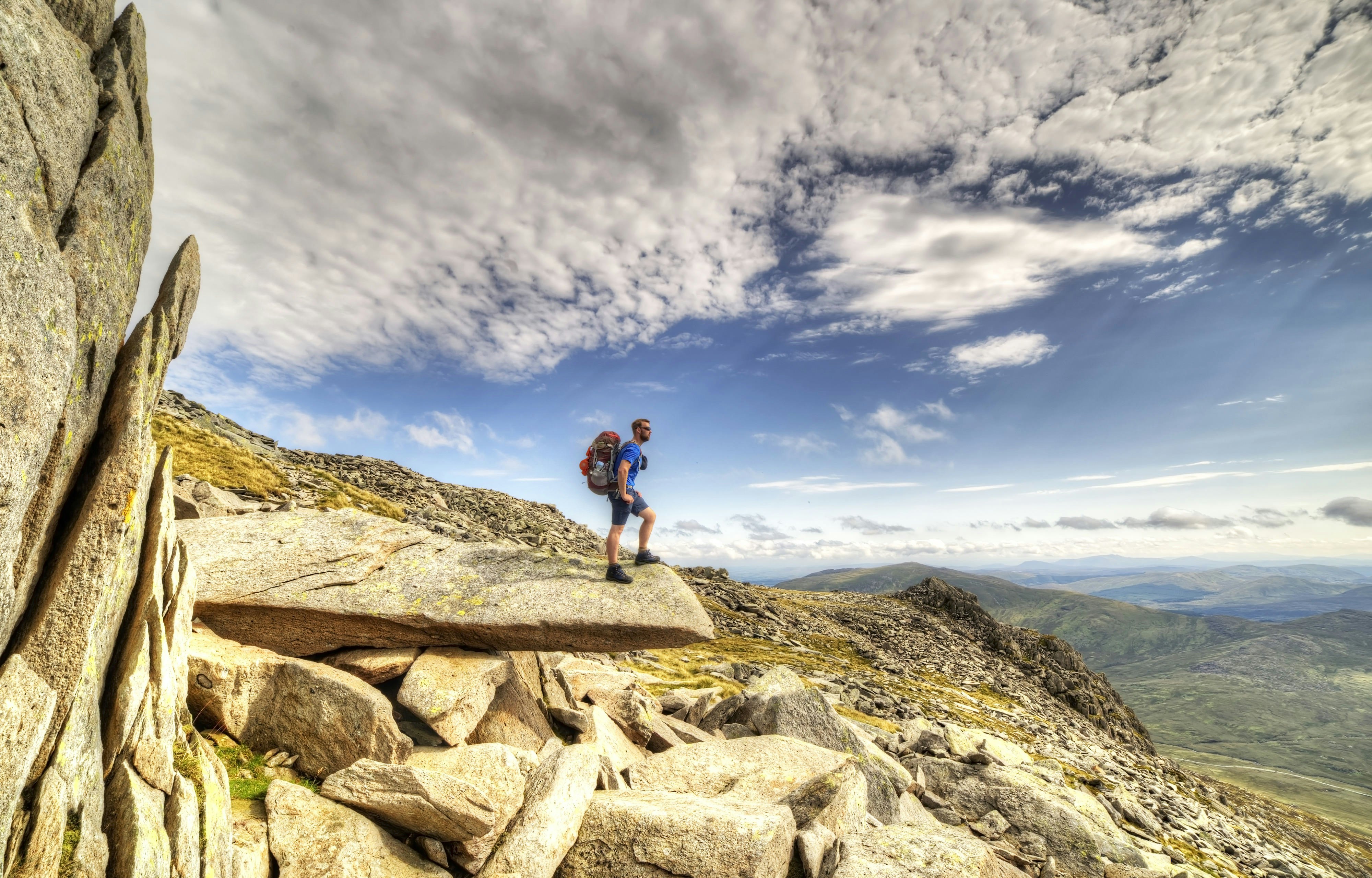
Climb the Glyders rather than Tryfan and Snowdon
Snowdonia National Park closed the routes up its most popular mountains during lockdown, including Snowdon, Tryfan and Cader Idris, to avoid visitors returning home with corona souvenirs. When they reopen, instead of joining lines to their summits, head to the Glyders: Glyder Fawr (large) and Glyder Fach (small). In sight of Snowdon, resembling castles grown out of rock, you can walk these via a circular, dramatic route that’s lump-in-throat beautiful, and yet off the tourist trail.
Fossil hunt in North Kent rather than the Jurassic Coast
Stretching from Dorset to Devon, the 95-mile-long Jurassic Coast alternates golden sands and weather-sculpted rocks and cliffs. However, beautiful spots such as Lulworth Cove, Durdle Door and Chesil Beach are sometimes victims of their own instafame. To discover a quieter stretch of British coast, yet rich in fossils and geology, explore the lesser known areas along the North Kent coast. The chalk cliffs between Pegwell Bay and Ramsgate are studded by sea-urchin fossils; the windswept pebble beach of Reculver is rich in prehistoric flotsam; and Herne Bay is one of the best places in the country to find sharks’ teeth.

Wander Wastwater instead of Windermere
The Lake District can throng with people come summer. The calm of the serene blue expanse of Windermere, is often counteracted by the hubbub around its local sights. But it doesn’t have to be this way. Sumptuous, wild and deep (England’s deepest lake) Wastwater, to the west and overlooked by England’s highest mountain, Scafell Pike, feels like the lake that the tourists forgot. Trickier to reach, and with fewer settlements around the dark blue water, it’s simply impossible for it to get as busy as the more populated lake shores in the eastern Lake District.
Amble around Rutland rather than the Cotswolds
The enchanting stone-built villages of the Cotswolds feel less charming if you get stuck in traffic, trying to find somewhere to park. For an English idyll without the crowds, head to Rutland, England’s smallest county. It’s full of rolling green hills and villages, such as Oakham and Stoke Dry, with Georgian architecture, thatched cottages, roses and hollyhocks. The rural landscape is dotted by stately homes and castles, including Burghley and Rockingham, and there’s the twitchers’ paradise of Rutland Water Nature Reserve.

Discover Yorkshire’s Wolds instead of its Dales and Moors
The Dales and Moors get all the attention, but the Yorkshire Wolds ("wolds" means low hills) offer some of England’s most tranquil countryside, with a National Hiking Trail wending through lush green valleys and between chalk hills. This may not be the wild moors of the Brontes, but the neat green pinstripe of the fields edged by ancient trees form their own inspiration, and the Wolds are among David Hockney’s most favoured subjects. You’re also close to the breathtaking beauty of the medieval church in Beverley, to rival York Minster, and there’s easy access to beaches along the coast.
Explore the Llŷn Peninsula in place of Cornwall
Swerve the summer madness of Cornwall’s white-sand beaches, denim-blue sea and craggy clifftop walks and discover another beautiful finger of land by traveling northwest, to the Llŷn Peninsula, south of Anglesey in Wales. Jutting out into the Irish Sea, reaching the Llŷn feels rather like you’ve made it to the ends of the earth: a landscape of slanting emerald fields, sandy coves, and lichen-spotted headlands. You have a good chance of scoring a remote cottage escape here, and its beach takeaways and coastal paths are less likely to be thronged.

Commune with trees at Kielder rather than the New Forest
Wild ponies and pigs, and vast, sheltering trees: the New Forest in England’s southwest is a leafy delight, but it’s no secret, and it snares millions of visitors in an average year. If you want to get away from it all in woodlands, make your way to Kielder Water in Northumberland. This is Northern Europe’s largest reservoir, and it’s surrounded by over 250 sq miles of forest, a habitat for red squirrels and osprey. It’s an ideal escape for star gazing, fishing, cycling and horseriding under the huge Northumberland skies.
Take to the Aberdeenshire Coast rather than the Isle of Skye
With its spiky crags and grass-green hills and huddled villages, Skye is a holiday destination that has felt overwhelmed by its own popularity. Time a visit to this beauty for the off-season and instead take a trip to the small towns along the coast of Aberdeenshire. Rugged small harbors such as Stonehaven bob with fishing boats, and a walk along the coast will pass the ruined castle of Dunnottar, location of Zeffirelli’s 1990 film version of Hamlet. Findlater Castle appears to have merged with the coastal cliff, and Forvie Nature Reserve has Britain’s largest sand dunes.
Journey the Cowal Peninsula in place of the Highlands
Lochs with peacock-blue waters, mountains with razor-ridges, castles reflected in mirror-flat lakes as mist swathes the local peaks. It’s the Scottish Highlands, right? Not necessarily. Rather than packing your bags and making a beeline to Loch Ness and Ben Nevis, head to Scotland’s less-known Cowal Peninsula, around 80 miles from Glasgow. With landscapes so vast and dramatic you can hardly believe you’re still in the UK, this is a cavalcade of glens, coastal paths and mountain gardens, and walkers can find peace amid the Arrochar Alps.
Trek along the Mourne Wall rather than the Giant’s Causeway
The unearthly hexagonal basalt rock formations of the Giant’s Causeway in County Antrim are one of Northern Ireland’s best-loved sights. To discover a road less traveled, try walking the length or a section of the Mourne Wall, built across the Mourne Mountains in the early 20th century. This is a challenging 30-mile route that climbs over 3000m, for views over Northern Ireland’s tallest peaks.

View Avebury instead of Stonehenge
While the magnificence of Stonehenge long restricted to viewpoints behind a cordon and visitor center re-constructions, the off-the-beaten-track stone circle at Avebury in Wiltshire remains completely unfettered. This spiritual circle may be lesser in stature than the more famous henge, but here you have a chance to wander through the UK’s most ancient architecture, which dates to between 2850 BCE and 2200 BCE.
Drive to Northumberland rather than Devon
With its arcs of golden beach, cream teas, bobbing fishing boats, and wisteria-draped villages, it’s little wonder that Devon sends UK holiday makers’ hearts aflutter. This summer, its two coasts are likely to be under more pressure than ever before. For a coastal escape with fewer crowds, albeit potentially the odd stray political advisor, try Northumberland, with 30 miles of beaches, white-painted fishing villages, and castles evoking the region’s defensive history, from ruined Dunstanburgh to Bamburgh.
You might also like:
Some countries want us to visit - but are we ready to travel?
Cool places to stay with your dog in Britain this summer
Bristol through the eyes of city poet Vanessa Kisuule






